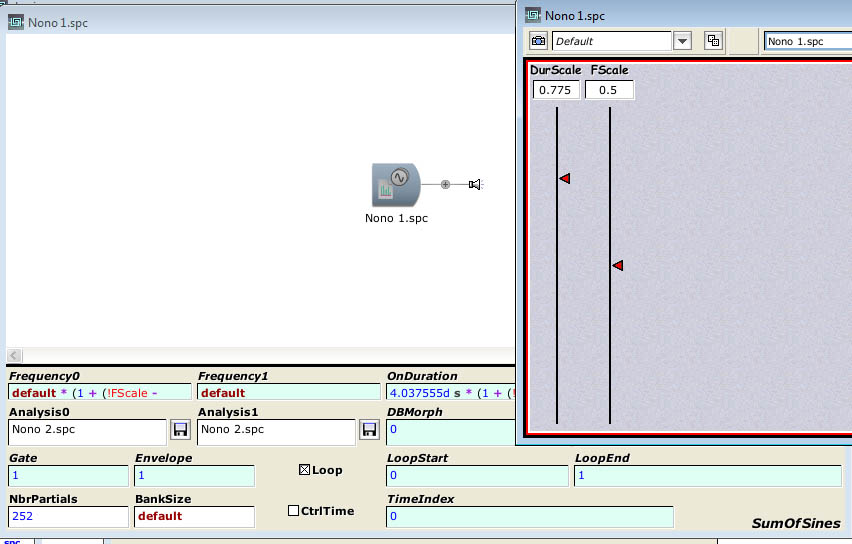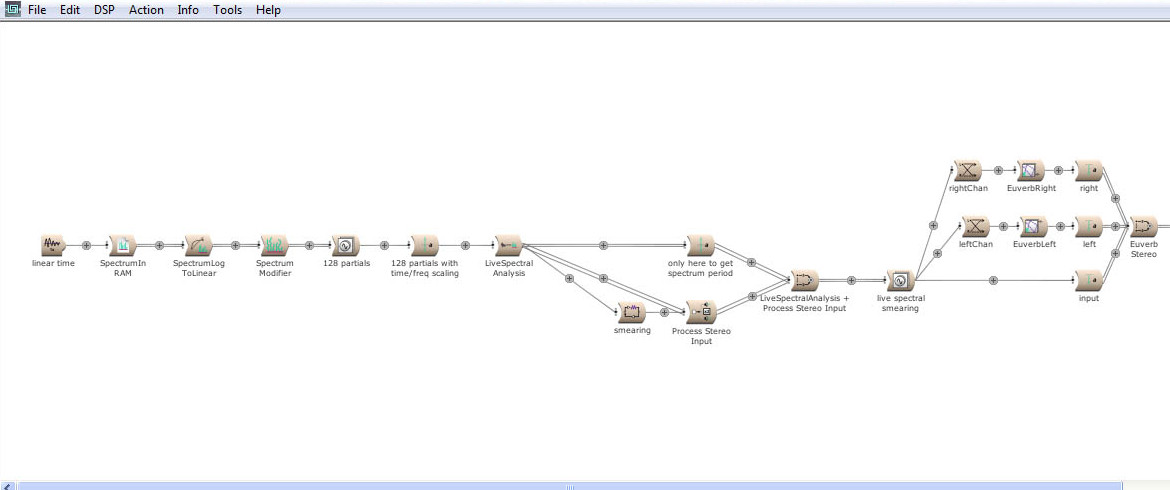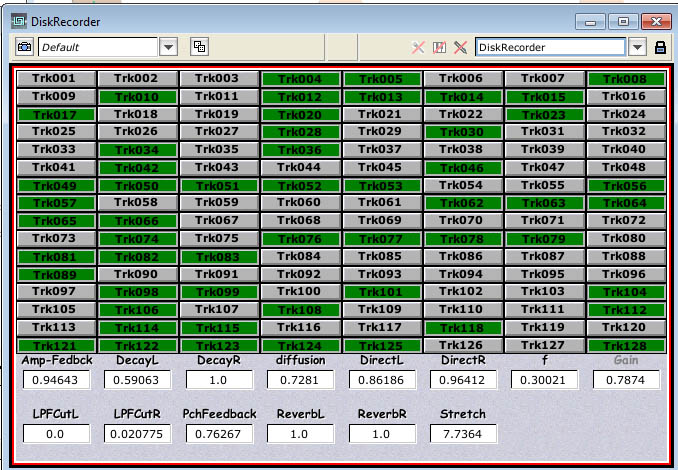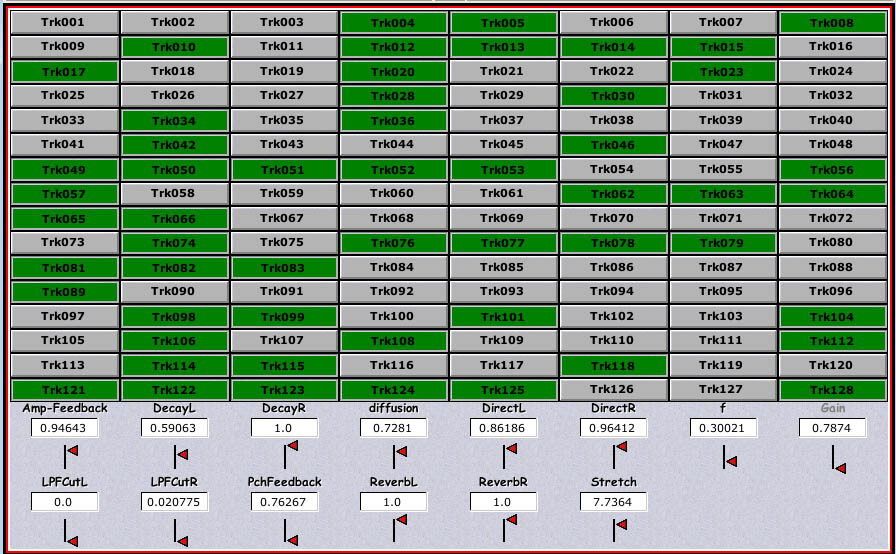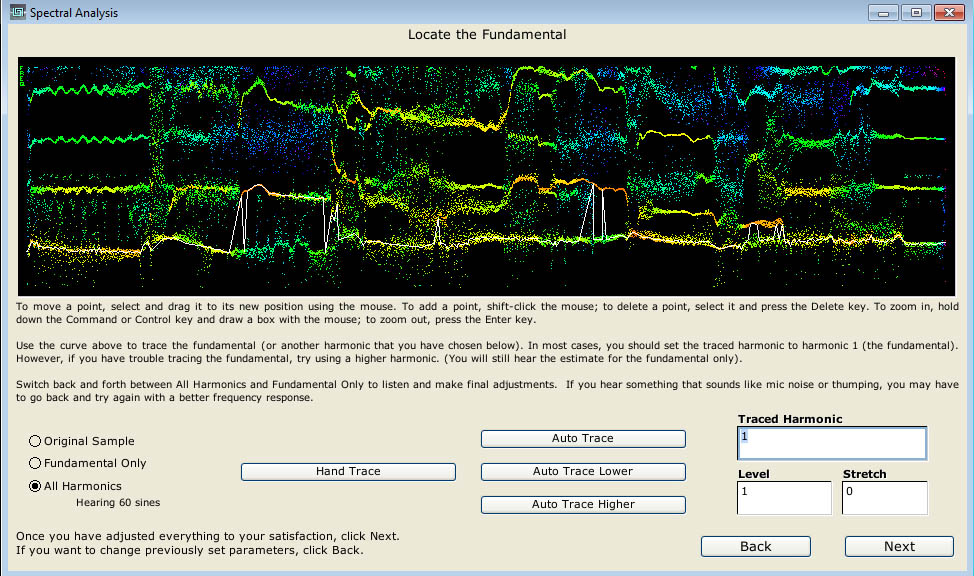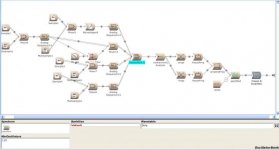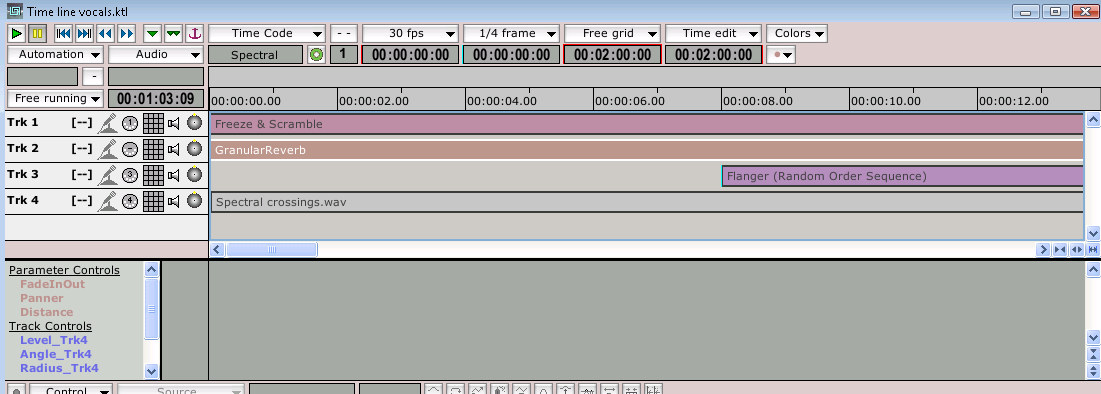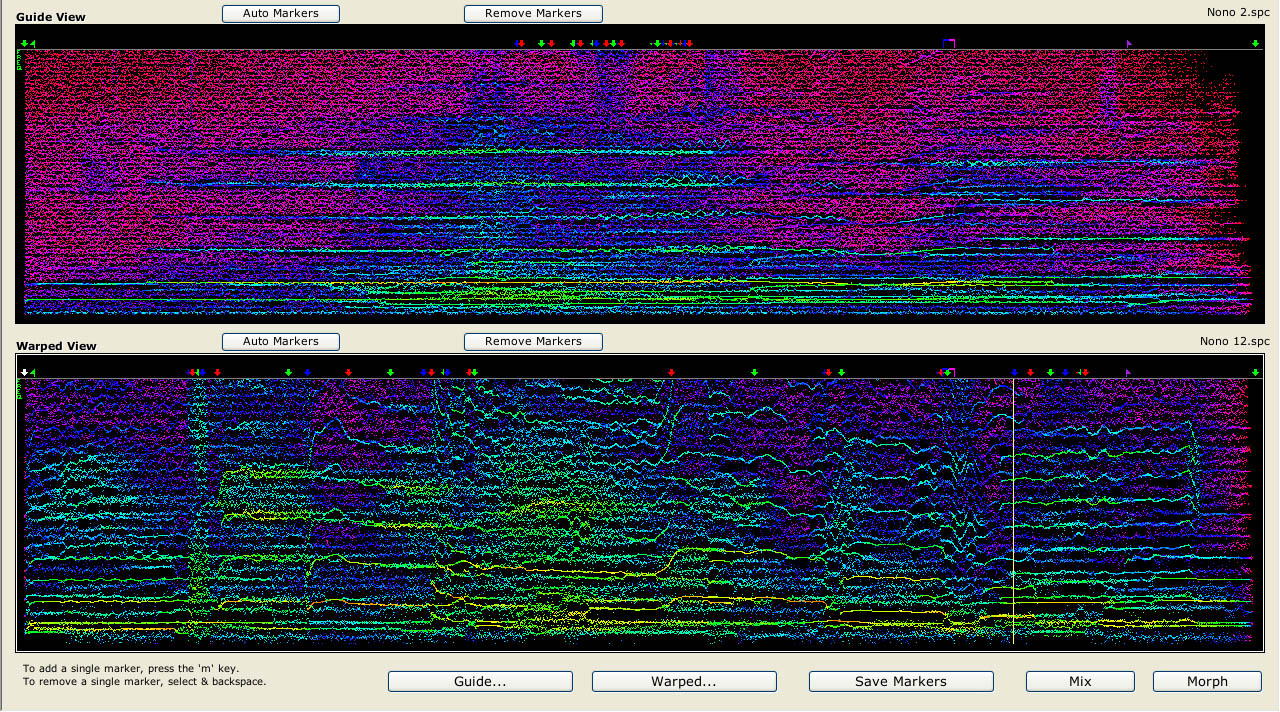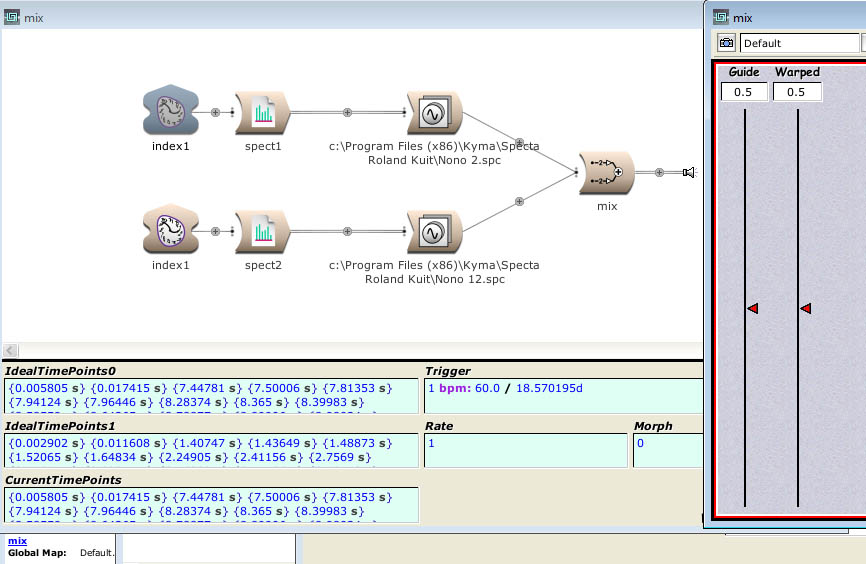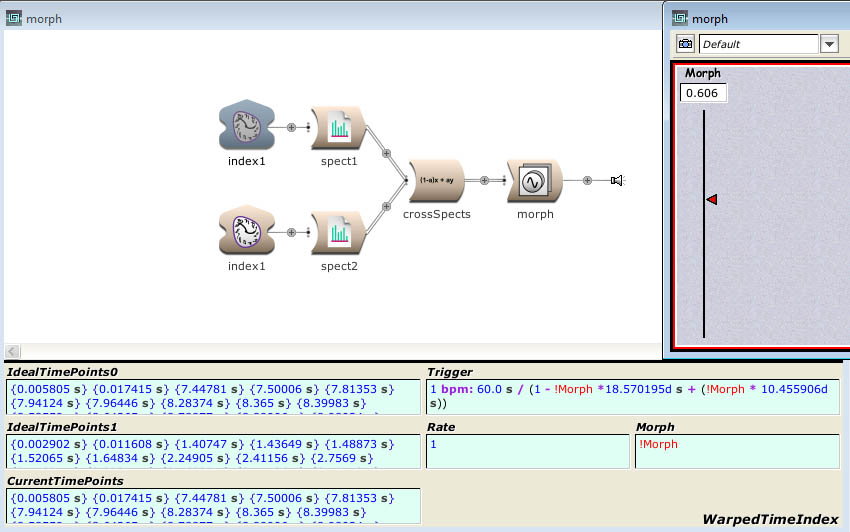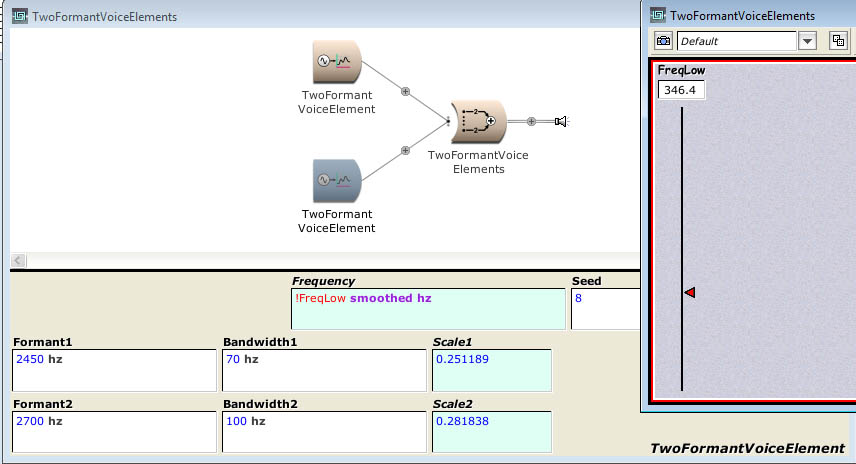Werken met formanten:
TwoFormantVoiceElement
An excitation signal similar to a glottal pulse (with a randomly chosen rate of vibrato) is used as the input to a pair of parallel second-order filter sections that simulate two of the formants of the vocal cavity.
Frequency
The frequency can be specified in units of pitch or frequency. The following are all ways to specify the A above middle C:
440 hz (in hertz or cycles per second)
4 a (as the 4th octave A)
69 nn (as a MIDI notenumber)
4 c + 9 nn (as 9 half steps above middle C)
1.0 / 0.00227273 s (inverse of a period at 44.1 kHz sample rate)
The following are examples of how to control the frequency using MIDI, the virtual control surface, or a third-party program:
!Pitch (key number plus pitch bend)
!KeyNumber nn (MIDI notenumber)
4 c + (!Frequency * 9 nn) (continuous controller from 4 c to 4 a)
Formant1
For an [IY] sound, try a center frequency of 238 hz. This will be the center frequency of the first formant. This is not the fundamental frequency of the TwoFormantVoiceElement but the center of an emphasized region of the spectrum.
Bandwidth1
For an [IY] sound, try a a bandwidth of 70 hz. This is the bandwidth of the lower formant region. The narrower the bandwidth, the more "pitched" the formant will sound--also the more likely the the filter is to overflow.
Scale1
For an [IY] sound, scale this formant to 0.3. This controls the amplitude of the first formant. For the full amplitude use +1.0 or -1.0; any factor whose absolute value is less than 1 will attenuate the output.
Formant2
For an [IY] sound, try a center frequency of 1741 hz. This will be the center frequency of the second formant. This is not the fundamental frequency of the TwoFormantVoiceElement but the center of an emphasized region of the spectrum.
https://soundcloud.com/roland-kuit/2formantelement
